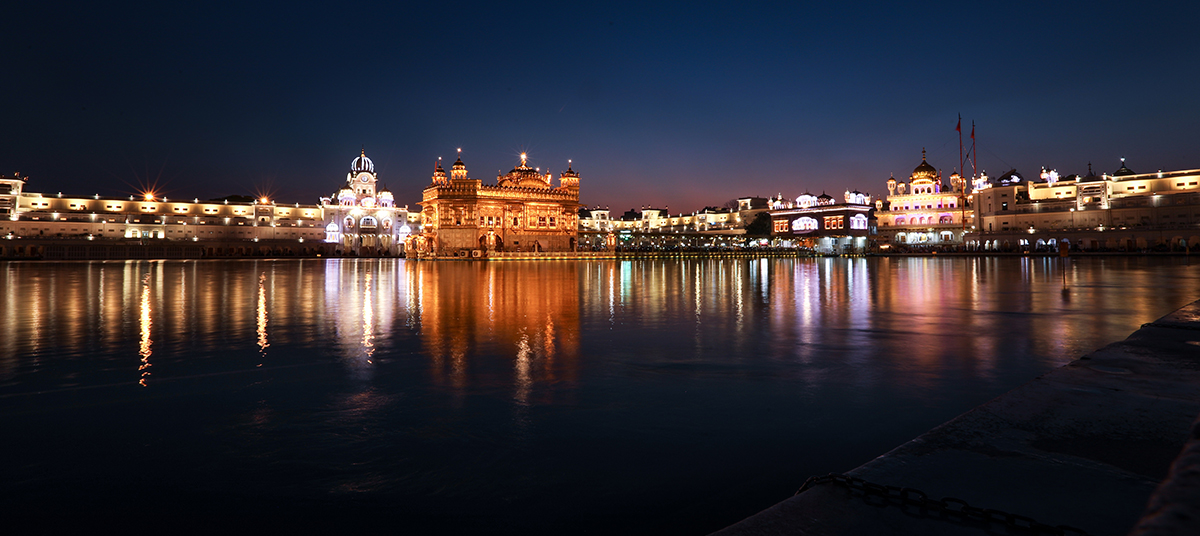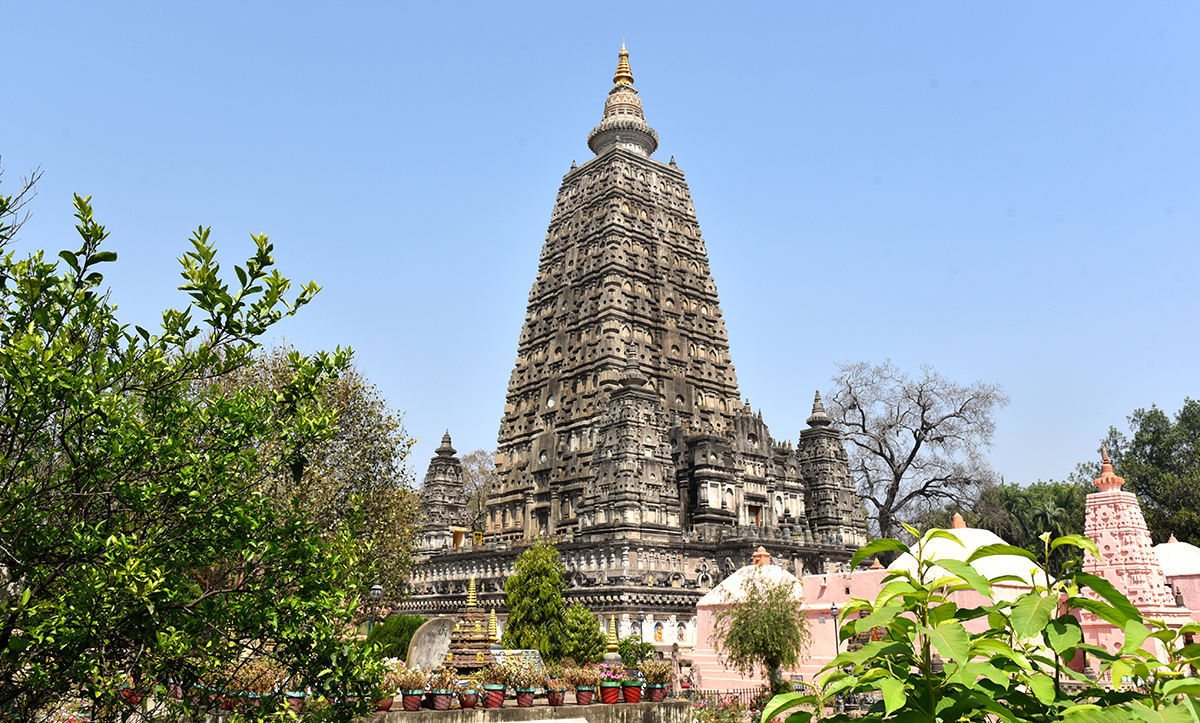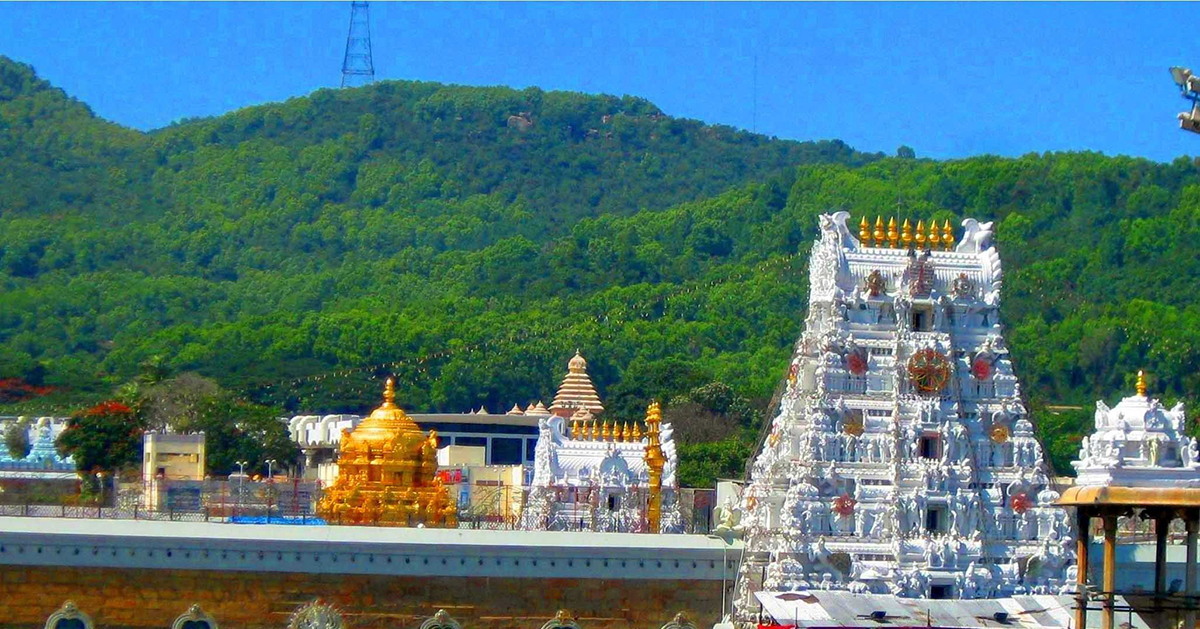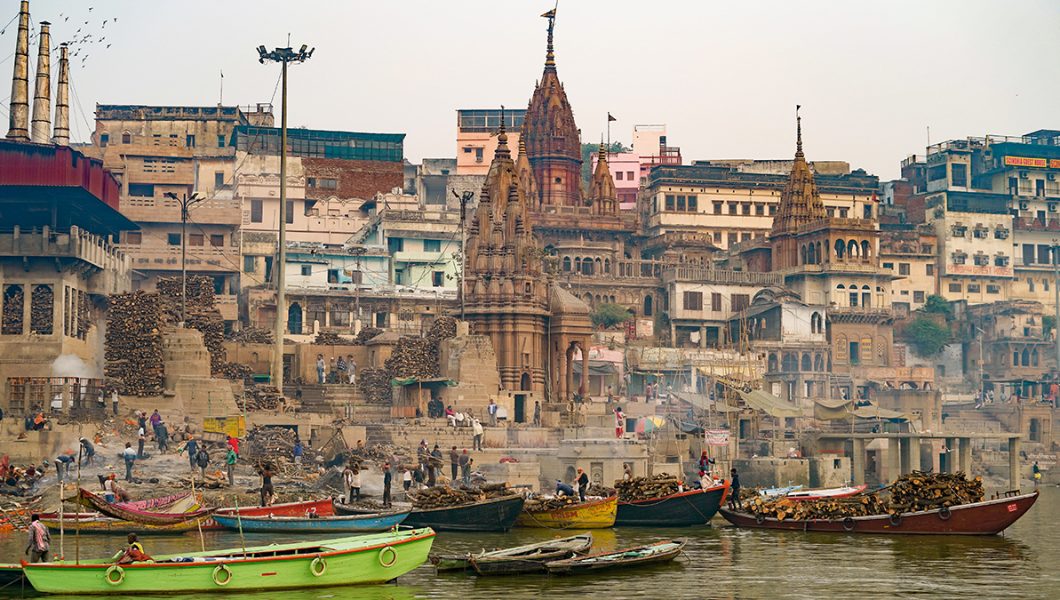India is a land of diverse religions, and it is home to numerous sacred sites that hold great spiritual significance. Here are the top five religious places in India
Varanasi (Kashi) Uttar Pradesh

Varanasi, also known as Kashi, is one of the oldest inhabited cities in the world and is considered the holiest place in Hinduism. Located on the banks of the sacred River Ganges, it is believed to be the abode of Lord Shiva. Varanasi is renowned for its numerous ghats (steps leading to the river), where pilgrims perform religious rituals and cremate their loved ones. People visit Varanasi to cleanse their sins, seek spiritual enlightenment, and attain salvation.
What is advantage of Varanasi ?
Varanasi, also known as Kashi, holds several advantages that make it a significant destination for spiritual seekers and tourists alike. Here are some of the advantages of visiting Varanasi:
- Spiritual Significance: Varanasi is considered one of the holiest cities in Hinduism and is believed to be the abode of Lord Shiva. The city holds immense spiritual importance, and it is believed that bathing in the sacred River Ganges and performing rituals at the ghats can cleanse one’s sins and lead to spiritual liberation. The city is filled with temples, ashrams, and spiritual centers, offering a unique and immersive spiritual experience.
- Rich History and Culture: Varanasi is one of the oldest continuously inhabited cities in the world, with a history that dates back thousands of years. It has been a hub of art, culture, and learning since ancient times. The city has witnessed the rise and fall of empires, and its streets and narrow lanes are filled with historical landmarks, ancient temples, and architectural marvels. Exploring the city allows visitors to immerse themselves in the rich history and culture of India.
- Ghats and Rituals: Varanasi is famous for its numerous ghats, which are steps leading to the River Ganges. These ghats serve as platforms for various religious ceremonies and rituals. The most popular ritual is the Ganga Aarti, a mesmerizing ceremony held every evening at the Dashashwamedh Ghat. The Aarti involves the chanting of hymns, waving of lamps, and synchronized movements by priests. Witnessing this grand spectacle is a captivating experience that showcases the spiritual vibrancy of Varanasi.
- Yoga and Meditation: Varanasi is a significant center for yoga and meditation practices. Many renowned yoga schools and ashrams offer courses and retreats for both beginners and advanced practitioners. The serene environment, spiritual aura, and the availability of experienced teachers make Varanasi an ideal place to delve deeper into yoga, meditation, and other spiritual practices.
- Cultural Immersion: Varanasi is a melting pot of diverse cultures and traditions. The city is known for its classical music, dance, literature, and religious festivals. The narrow lanes of Varanasi are lined with shops selling traditional handicrafts, textiles, and artifacts, providing visitors with an opportunity to explore and experience the vibrant local culture.
Visiting Varanasi offers a unique blend of spiritual exploration, historical immersion, cultural experiences, and a deep connection with the traditions of India. It provides an opportunity for self-discovery, reflection, and an understanding of the rich religious and cultural heritage of the country.
Golden Temple, Amritsar, Sri Harmandir Sahib

Amritsar is a city in the northwestern state of Punjab and is home to the Golden Temple, the most revered site of the Sikh religion. The Golden Temple, also known as Sri Harmandir Sahib, is a beautiful gurdwara (Sikh temple) made of gold and surrounded by a sacred pool called the Amrit Sarovar. It is a place of worship, peace, and community service, open to people of all religions. The Golden Temple attracts millions of devotees every year, who come to seek spiritual solace and participate in the langar (community kitchen) that serves free meals to all visitors.
What is advantage of Golden Temple?
The Golden Temple, also known as Sri Harmandir Sahib, offers several advantages that make it a unique and revered religious site in India. Here are some of the advantages of visiting the Golden Temple in Amritsar:
- Spiritual Significance: The Golden Temple holds immense spiritual significance for Sikhs. It is considered the holiest Gurdwara (Sikh place of worship) and the spiritual and cultural center of Sikhism. The temple is built around the sacred pool called the Amrit Sarovar, which is believed to have healing properties. Sikhs from all around the world visit the Golden Temple to seek spiritual solace, offer prayers, and connect with their faith.
- Architectural Splendor: The Golden Temple is renowned for its magnificent architecture and breathtaking beauty. The main structure is covered in gold leaf, which gives it a striking appearance. The temple complex features stunning marble work, intricate carvings, and ornate decorations, showcasing the skill and craftsmanship of Sikh artisans. The serene atmosphere and the reflection of the temple in the Amrit Sarovar create a mesmerizing sight that leaves visitors in awe.
- Open to All: One of the remarkable aspects of the Golden Temple is its openness to people of all faiths and backgrounds. The Sikh religion promotes equality, inclusivity, and service to humanity. The Golden Temple exemplifies these principles by welcoming visitors from different religions and cultures. Everyone is invited to enter the temple, partake in the community kitchen (langar), and receive a free meal irrespective of their caste, creed, or social status. This unique concept of serving food to all as a form of selfless service (seva) is a major highlight of the Golden Temple experience.
- Community Service: The Golden Temple is not only a place of worship but also a center for selfless service and community welfare. The langar at the Golden Temple is one of the largest community kitchens in the world, serving free vegetarian meals to thousands of visitors every day. Volunteers work tirelessly to prepare, serve, and clean up after the langar, embodying the spirit of seva (selfless service). This practice promotes equality, humility, and the concept of sharing and caring for others.
- Cultural Experience: A visit to the Golden Temple provides a unique cultural experience. The temple complex is bustling with devotees, musicians, and volunteers, creating a vibrant and lively atmosphere. The continuous recitation of hymns from the Sikh scriptures (Guru Granth Sahib) by the ragi (musicians) adds to the spiritual ambiance. Visitors can witness the religious rituals, listen to devotional music, and observe the communal harmony and devotion that permeates the surroundings.
The Golden Temple offers a combination of spiritual, architectural, cultural, and humanitarian experiences. It serves as a beacon of Sikh faith and principles, spreading the message of equality, service, and devotion. A visit to the Golden Temple provides an opportunity for introspection, cultural immersion, and a deeper understanding of Sikhism’s values and traditions.
Bodh Gaya, State of Bihar

Bodh Gaya, located in the state of Bihar, is a significant place for Buddhists as it is where Gautama Buddha attained enlightenment under the Bodhi Tree. The Mahabodhi Temple, a UNESCO World Heritage Site, marks this sacred spot. Pilgrims from around the world visit Bodh Gaya to meditate, study Buddhism, and pay homage to the Buddha. The serene atmosphere and historical importance of this place make it a must-visit for anyone interested in Buddhism or seeking spiritual growth.
What is advantage of Bodh Gaya?
Bodh Gaya holds several advantages that make it a significant and revered religious site for Buddhists and visitors from around the world. Here are some of the advantages of visiting Bodh Gaya:
- Enlightenment Site: Bodh Gaya is the place where Gautama Buddha, the founder of Buddhism, attained enlightenment under the Bodhi Tree. This event is considered one of the most significant moments in human history and forms the cornerstone of Buddhist philosophy and teachings. Visiting Bodh Gaya allows individuals to connect with this profound spiritual event and experience the serenity and sacredness associated with the site.
- Mahabodhi Temple: The Mahabodhi Temple in Bodh Gaya is a UNESCO World Heritage Site and is one of the oldest brick structures in India. The temple complex houses the famous Bodhi Tree, under which the Buddha attained enlightenment. The architecture of the temple reflects a blend of ancient Indian, Buddhist, and later influences, making it an architectural marvel. Visiting the Mahabodhi Temple provides an opportunity to witness the intricate carvings, ancient relics, and serene environment that contribute to the spiritual atmosphere.
- Meditation and Mindfulness: Bodh Gaya offers a conducive environment for practicing meditation and mindfulness. The serene surroundings and the spiritual energy of the place create an ideal atmosphere for contemplation and self-reflection. Many Buddhist meditation centers and retreats in Bodh Gaya offer courses and guidance for individuals interested in deepening their meditation practice or learning mindfulness techniques. Visitors can engage in meditation sessions, learn from experienced teachers, and experience the transformative power of these practices.
- Pilgrimage Destination: Bodh Gaya is one of the four major pilgrimage sites for Buddhists, known as the Four Great Places of Buddhism. These places are associated with significant events in the life of the Buddha. As a pilgrimage destination, Bodh Gaya attracts devotees and followers of Buddhism from all over the world. Pilgrims visit the site to pay homage to the Buddha, offer prayers, and engage in spiritual practices, fostering a sense of devotion, connection, and community.
- Cultural Exchange and Learning: Bodh Gaya is a melting pot of diverse cultures and traditions. Visitors to Bodh Gaya have the opportunity to interact with people from different parts of the world who share a common interest in Buddhism and spirituality. The site attracts scholars, practitioners, and spiritual seekers, creating an environment conducive to cultural exchange, learning, and understanding. Engaging in discussions, attending teachings by esteemed Buddhist teachers, and participating in cultural events foster personal growth and broaden one’s perspective.
Visiting Bodh Gaya offers a unique opportunity to connect with Buddhism’s rich spiritual heritage, explore the teachings of the Buddha, and experience a sense of tranquility and introspection. The advantages of Bodh Gaya lie in its historical and spiritual significance, the opportunity for personal growth, and the sense of community that emerges from being in a place of profound enlightenment.
Ajmer Sharif
Ajmer Sharif is a renowned Sufi shrine located in the city of Ajmer, Rajasthan. It is the final resting place of the Sufi saint Khwaja Moinuddin Chishti and is considered one of the holiest Muslim shrines in India. People from different faiths visit Ajmer Sharif to seek the blessings of the saint and offer their prayers. The annual Urs festival, commemorating the death anniversary of Khwaja Moinuddin Chishti, attracts millions of devotees who come to participate in the celebrations and seek spiritual solace.
Tirupati City in Andhra Pradesh

Tirupati, situated in the state of Andhra Pradesh, is home to the Sri Venkateswara Temple, one of the most visited and richest Hindu temples in the world. Dedicated to Lord Venkateswara, an incarnation of Lord Vishnu, the temple is situated atop the Tirumala hills. Pilgrims climb the hills or use various modes of transportation to reach the temple, where they offer prayers and seek the blessings of the deity. The temple’s grand architecture, religious significance, and the divine aura surrounding it make it a significant religious destination for Hindus.
What is advantage o fTirupati?
Tirupati, home to the renowned Sri Venkateswara Temple, offers several advantages that make it a significant and popular pilgrimage destination in India. Here are some of the advantages of visiting Tirupati:
- Spiritual Significance: Tirupati is considered one of the holiest and most revered places of worship in Hinduism. The Sri Venkateswara Temple, located atop the Tirumala hills, is dedicated to Lord Venkateswara, an incarnation of Lord Vishnu. Devotees believe that a visit to the temple and seeking the blessings of Lord Venkateswara can bring spiritual fulfillment, prosperity, and relief from worldly sufferings. The temple attracts millions of devotees from around the world who come to experience the divine presence and offer their prayers.
- Ancient and Sacred Temple: The Sri Venkateswara Temple in Tirupati is one of the oldest temples in India, with a history that dates back several centuries. The temple complex showcases magnificent Dravidian architecture, intricate carvings, and beautiful sculptures. The sanctum sanctorum houses the idol of Lord Venkateswara, and the temple’s ornate gopurams (towers) add to its grandeur. The divine atmosphere and the religious rituals performed at the temple create a spiritually charged environment.
- Natural Beauty: Tirupati is nestled amidst the scenic beauty of the Eastern Ghats, surrounded by lush greenery and picturesque landscapes. The Tirumala hills provide a serene and tranquil setting for spiritual contemplation and rejuvenation. The trek to the temple through the scenic hills is a popular and rewarding experience for devotees and visitors. The natural beauty of the region adds to the overall charm and allure of Tirupati.
- Devotional Practices and Seva: Tirupati offers various devotional practices and seva (service) opportunities for devotees. The temple has a well-established system for darshan (viewing of the deity), with different types of darshan available to suit the preferences of individuals. Devotees can participate in various seva activities, such as hair tonsuring, donating offerings, and serving in the temple premises. Engaging in these acts of devotion and service deepens one’s connection with the divine and reinforces the principles of humility, surrender, and selflessness.
- Cultural and Festive Vibrancy: Tirupati is not only a place of religious significance but also a hub of cultural activities and festive celebrations. The temple town is known for its elaborate rituals, music, dance performances, and processions during festivals. The annual Brahmotsavam festival, celebrated for nine days, is a major highlight when the temple is beautifully decorated, and colorful processions take place. Participating in these festivities allows visitors to witness the rich cultural heritage and traditions of South India.
Visiting Tirupati offers a unique blend of spirituality, architectural splendor, natural beauty, and cultural experiences. It provides an opportunity for devotees to express their devotion, seek divine blessings, and experience a sense of peace and inner fulfillment. The advantages of Tirupati lie in its sacredness, the grandeur of the temple, the spiritual practices, and the vibrant cultural traditions that create a deeply enriching pilgrimage experience.
These are just a few of the many religious places in India that hold immense cultural, historical, and spiritual importance. Each of these sites attracts devotees from around the world, contributing to the rich tapestry of India’s religious and cultural diversity.






No Comments